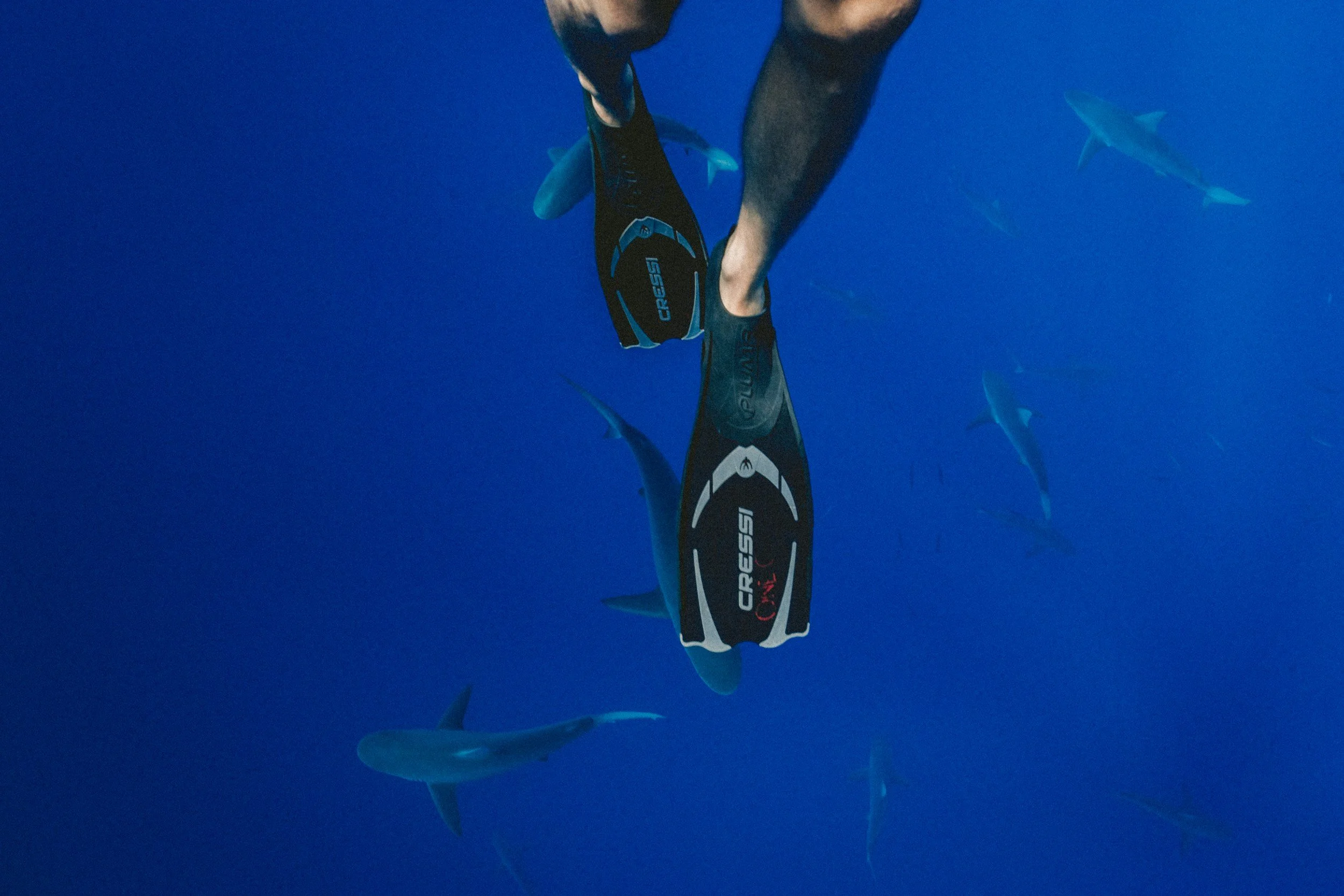Choosing the Right Fins for Your Whale Swimming Adventure
When preparing for a whale swimming adventure, selecting the right fins is crucial. The right pair can enhance your propulsion, reduce fatigue, and ensure a comfortable experience in the water. With various options available, understanding the differences can help you make an informed choice.
Why Your Fins Matter
Fins play a significant role in your swimming efficiency. The right pair allows for smoother movements, conserving energy and enabling you to focus on the awe-inspiring presence of whales. Ill-fitting or unsuitable fins can lead to discomfort, cramps, or even hinder your ability to keep up with these majestic creatures.
We recommend buying your gear as early as possible and spending time using your equipment in the ocean before joining your trip, the same way you wouldn’t wear a brand new pair of hiking boots on your first day of a big adventure. Getting used to your fins ahead of time gives you the confidence and comfort to be fully present in the water.
Types of Fins for Whale Swimming
Freediving Fins
Freediving fins are longer and designed to deliver greater thrust with each kick, making them ideal for covering distance with less effort. While they do take a little getting used to, they’re our go-to choice for multi-day whale swimming trips, especially when there’s a bit of swell. The extra length helps you move quietly and efficiently through the water, which is key when approaching whales with care.
Australian-made Penetrator Carbon fins are a favourite among experienced freedivers for their lightweight power and durability. But you don’t need high-end fins to have a great experience—entry-level freediving fins will still give you excellent performance. We recommend choosing a full foot pocket design for comfort and a secure fit in the water.
Snorkelling Fins
Ideal for beginners and casual swimmers, snorkelling fins are typically shorter and more flexible. They offer ease of use and are suitable for calm waters. These are a great option if you’re headed out for a short whale swim experience. Brands like Cressi and Scubapro offer reliable snorkelling fins with good comfort and performance.Travel Fins
For those prioritising portability, travel fins are compact and lightweight. While they may offer less power, they’re convenient for travellers and suitable for calm sea conditions. They’re especially handy if you’re packing light or combining your whale swim with other travel plans.
Key Considerations When Choosing Fins
Fit and Comfort
A snug fit is essential. Fins that are too tight can cause blisters, while loose fins may slip off during swimming. It’s always best to try them on before your trip to ensure comfort and avoid any surprises in the water.
If you’re unsure about sizing or find your fins rub in certain spots, consider wearing neoprene socks. These thin wetsuit-style socks add a layer of cushioning, help prevent blisters, and can improve the overall fit, particularly with full foot fins. They’re a simple addition that can make a big difference, particularly during multi-day swims.
Blade Length and Flexibility
Longer blades offer more propulsion with each kick, making them ideal for covering distance and swimming efficiently—especially when you're in open water or need to reach the whales quickly and quietly. However, they do require stronger leg muscles and can take a bit of getting used to if you’ve never swum with them before.
Shorter blades, on the other hand, are easier to manoeuvre and less tiring, making them a great option for beginners or those looking for a more relaxed experience.
We recommend giving yourself time to practise in the ocean before your trip. A bit of practice goes a long way toward building muscle memory and confidence, so when the moment comes to slip into the water with the whales, your gear feels like a natural extension of you.
Material
Fins are commonly made from rubber, plastic, or composite materials. Rubber fins are durable and flexible, while composite materials can offer enhanced performance for experienced swimmers.
Dan Silveira, freediving instructor and avid spearfisherman, teaches you how to fit your fins properly.
Caring for Your Fins
Choosing the right fins is all about finding the balance between comfort, control, and performance. Whether you're gliding gently beside a humpback or keeping pace in open water, your fins should support your experience, not hold you back. With a bit of care and the right fit, a good pair of fins can last you for many adventures to come.
Rinse after each swim: Salt and sand can break down the materials over time, so always rinse your fins in fresh water.
Avoid the sun: Dry your fins in the shade to prevent UV damage and warping.
Store flat: Keep them lying flat or hanging by the foot pocket to preserve their shape.
Where to Buy Fins in Australia & New Zealand
While many fin manufacturers are based overseas, there are excellent local stockists in Australia and New Zealand that offer a wide range of quality gear and expert advice:
Adreno – A trusted dive and snorkel specialist stocking brands like Cressi, Mares, and Ocean Hunter, with physical stores around Australia and a great online selection.
Dive Gear Australia – An Australian retailer providing a variety of fins suitable for different diving activities.
Dive Gear Online NZ – New Zealand's largest online store for scuba diving, spearfishing, freediving, and snorkelling equipment, offering a wide selection of fins from various brands.
Wettie – A New Zealand-based company specialising in spearfishing and freediving gear, offering a range of fins designed for local conditions.
At Awesome Whale Adventures, we understand that when your gear works with you, not against you, it frees you up to fully enjoy the magic of swimming alongside these incredible creatures and our team are always on hand to provide advice on what to pack and how to prepare for your whale swimming adventures!


